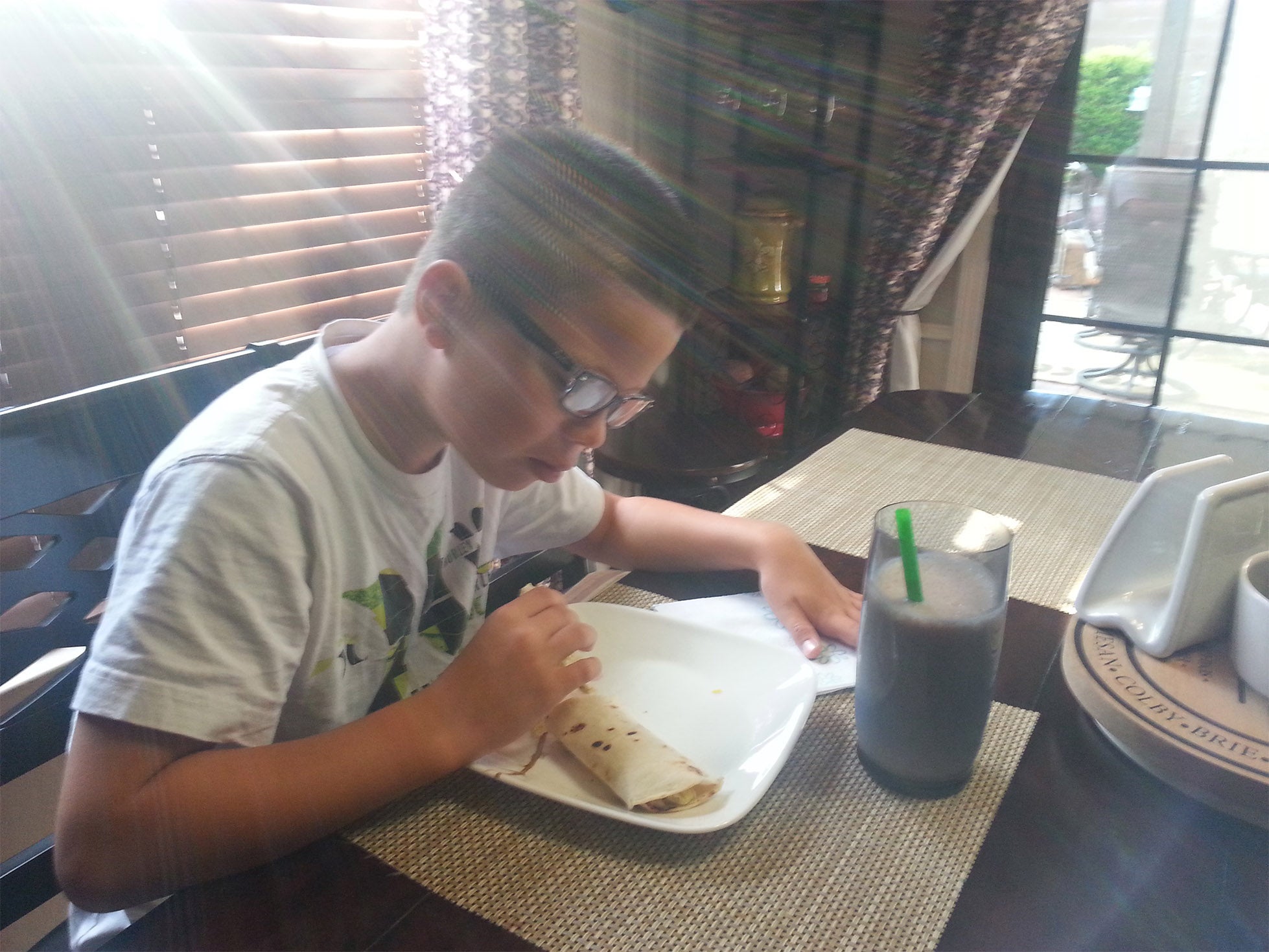
August is National Kids Eat Right month. It also happens to be back to school month for the kids in New Mexico. Last week we wrote about the importance of nutrition in our kids’ breakfasts. Today we are going to break it down a little more simply with our resident dietician Teresa Anderson, CDE.
What happens to a child who goes to school after skipping breakfast?
The student will have a lack of concentration, focus and energy, which makes learning, and behaving much harder. One statistic shows 60% of teens skip breakfast four times a week. That amazes me. And I would wager on weekends they don’t get up early enough to eat breakfast. Breakfasts should be nourishing with whole grains, fruit and a rich source of protein.
What about kids who go to school after eating the real sugary cereals with cartoon characters on the box?
They will probably be asleep by their first class. Most cereals are fortified, but pre-sweetened cereals have one to two teaspoons of added sugar per listed single serving size. So a bowl of cereal may have three to six or more teaspoons of sugar. For reference, we should only have around six to seven teaspoons per day.
What about instant cereals, like oatmeal?
Breakfast should fuel us for the morning – cereals, or breads should be whole grain and a good source of fiber. Breakfast should be rich in protein too. A recent study showed that kids that had protein in breakfast gained less body fat. The weight they would gain from overly sugary cereals is not just weight, but fluff weight. It’s not muscle. Many of the instant cereals may still be high in added sugars. And the ones that pour out of an envelope in ‘dust’ digest quickly. For hot or cold cereals I might recommend ones like the Original Special K (specifically Original), Cheerios (which has a high protein option), steel cut oats, Wheat or Bran Chex, Shredded Wheat, Wheaties or Total. Go with the store brand to save a few pennies per ounce.
What about for fiber and calcium?
You will get fiber from whole grains and fruit. If you add low fat cottage cheese, yogurt, or milk, you will get calcium as well as vitamin D.
What would you say to those who say they are not hungry for breakfast?
I might ask them, how many other times a day do you eat when you are really not hungry? ‘Oh, someone brought brownies to work….’
What would you say to those who say they don’t have the time for breakfast?
Breakfast is too important not to make time! Breakfast can be easily prepared in three minutes or less and can be eaten on the go. Parents, be good role models and eat breakfast, too! Studies show that people who skip breakfast tend to get fatter as they get older.
What are a few ideas for quick breakfasts on the go?
Fill a whole grain wrap or a muffin with egg, Canadian bacon or ham or low fat cottage cheese. Have oatmeal with berries and a spoonful of peanut butter. Make a baggy with dried cereal [1/2 – ¾ CUP], one to two tablespoons of dried fruit and one to two tablespoons of nuts or seeds. Edamame, pumpkin or soy all are good sources of protein. Top off Greek yogurt or cottage cheese with chopped apples or grapes and a sprinkle of nuts or seeds. All of these will give you lean, healthy protein and good fiber for the day.
What about portion sizes?
Yes! Keep your children’s portions age appropriate. Visit choosemyplate.gov for a good reference on feeding and nourishing kids as well as recipe ideas.
Anything else?
Kids need nutrition knowledge and food prep skills. Teach your kids to make age-appropriate meals. It’s the parents’ job to have the right food in the house. Please don’t bribe your kids to eat with foods that have cartoons, toys or colored marshmallows. They don’t know those exist until you bring them in to the house. Your job is to have good, healthy food in the house; they will eat what you have.
Food is nutrition. Meals don’t have to be different every day. Food can be fun for the little ones – slice the banana into a happy face on the cereal, cut the sandwich into diamond triangles. Make it fun to try new things. But if you let them learn that they can have anything they want anytime they want, they won’t learn proper habits and they can grow up with expectations that meals have to entertain them. I see this in young adults now having health problems that we used to not see in adults until they are fifty or sixty years old.
As always, if you really have trouble with weight or understanding nutrition, please see a registered Dietitian Nutritionist.




